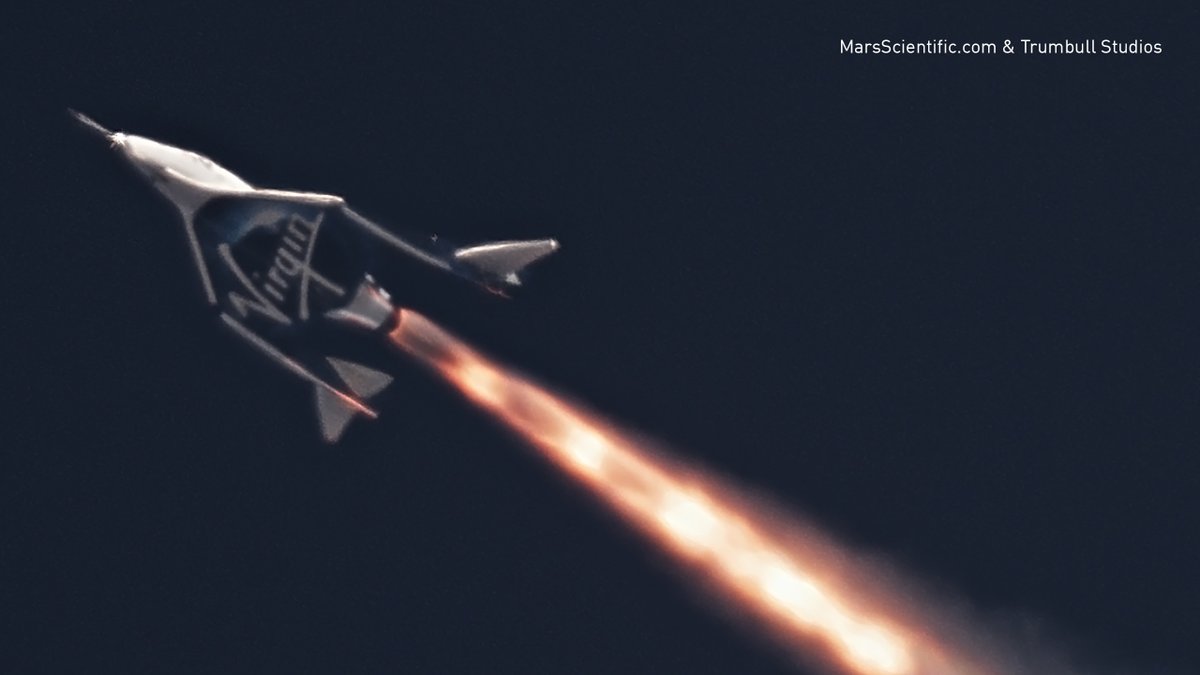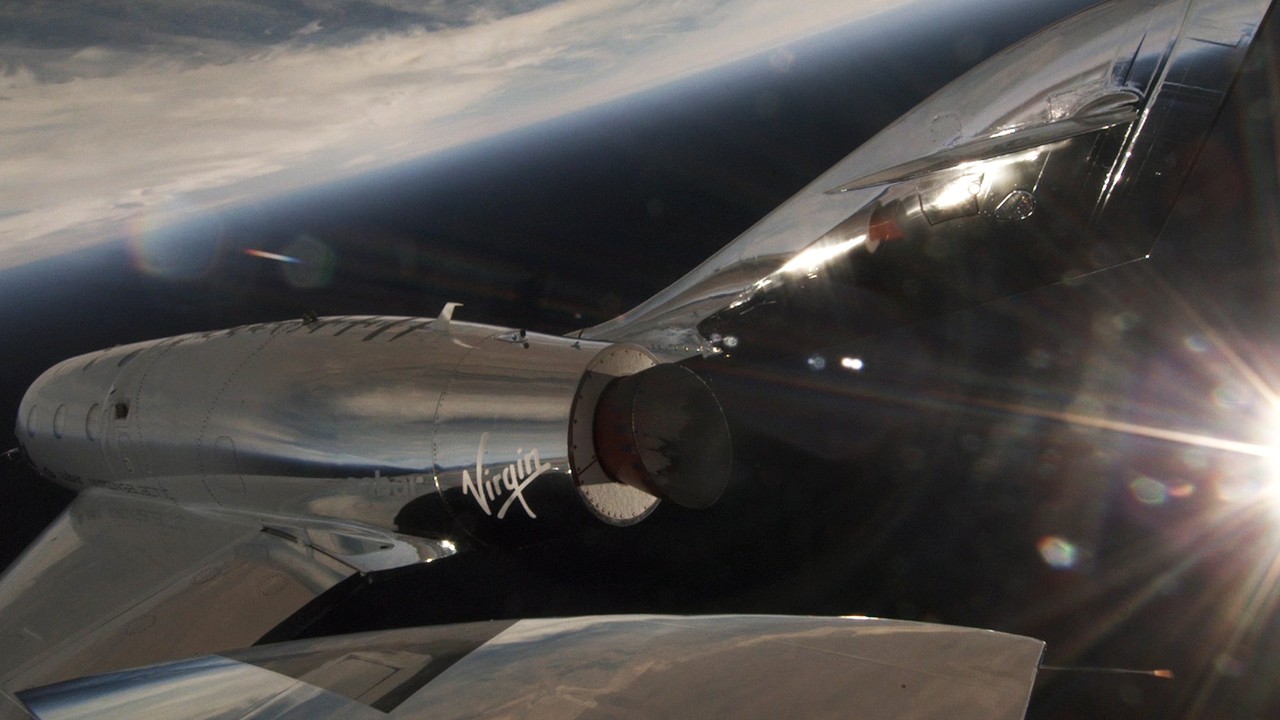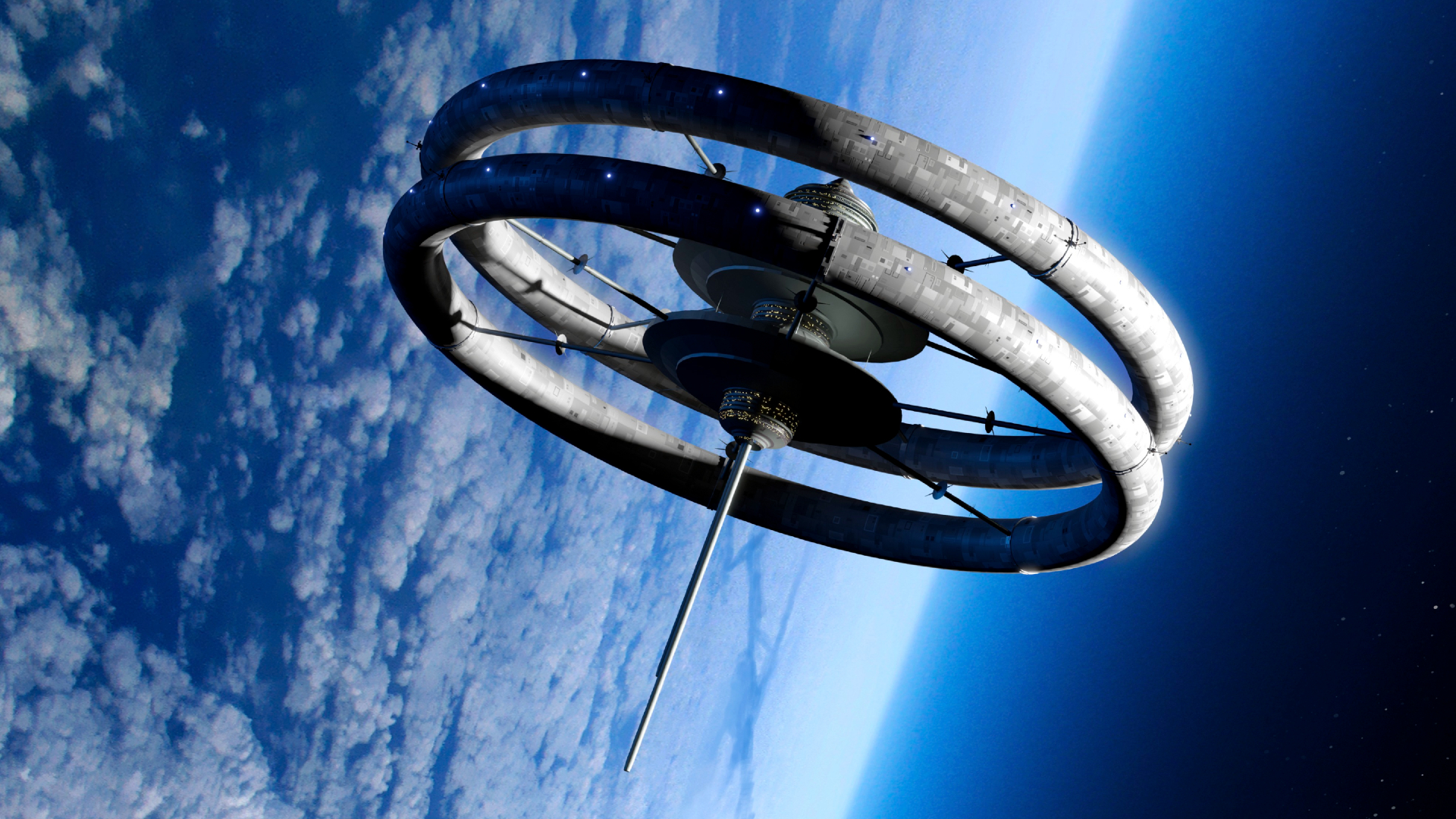Watch Virgin Galactic's VSS Unity Soar on 1st Powered Flight (Video)
Virgin Galactic's SpaceShipTwo performed its first powered test flight in more than three years yesterday (April 5), and a new video takes you along for the highly anticipated ride.
The 1-minute video shows the suborbital space plane, known as VSS Unity, drop from the mother-ship airplane that carried it into the skies over California's Mojave Desert, zoom even higher under its own rocket power and roll down the runway shortly after landing.
A SpaceShipTwo vehicle hadn't performed such a test since Oct. 31, 2014, when the first SpaceShipTwo, VSS Enterprise, broke apart in a tragic accident that killed co-pilot Michael Alsbury and injured pilot Peter Siebold.
An investigation later determined that the accident occurred because Alsbury unlocked Enterprise's "feathering" descent system too early. VSS Unity features a modified feathering system that should prevent such premature unlocking, Virgin Galactic representatives have said.
The six-passenger, two-pilot SpaceShipTwo vehicle was designed to carry people and scientific payloads on brief jaunts to suborbital space. Customers who take the trip will experience several minutes of weightlessness and see the curvature of Earth against the blackness of space.
A ticket to ride the space plane currently sells for $250,000.
VSS Unity fired its rocket engine for 30 seconds yesterday, reaching a maximum altitude of 84,271 feet (25,686 meters) — that's nearly 16 miles (26 kilometers) — and a top speed of Mach 1.87, Virgin Galactic representatives said. The flight was the 12th overall for Unity, which Virgin Galactic officially unveiled in February 2016. The space plane had previously performed seven unpowered glide flights and four "captive carry" tests, in which it remained attached to the mother ship, which is known as VMS Eve.
Breaking space news, the latest updates on rocket launches, skywatching events and more!
Virgin Galactic plans to perform a series of additional powered test flights with Unity. If all goes well, commercial operations could begin soon — perhaps before the end of the year, Virgin Galactic founder Sir Richard Branson has said.
Follow Mike Wall on Twitter @michaeldwall and Google+. Follow us @Spacedotcom, Facebook or Google+. Originally published on Space.com.

Michael Wall is a Senior Space Writer with Space.com and joined the team in 2010. He primarily covers exoplanets, spaceflight and military space, but has been known to dabble in the space art beat. His book about the search for alien life, "Out There," was published on Nov. 13, 2018. Before becoming a science writer, Michael worked as a herpetologist and wildlife biologist. He has a Ph.D. in evolutionary biology from the University of Sydney, Australia, a bachelor's degree from the University of Arizona, and a graduate certificate in science writing from the University of California, Santa Cruz. To find out what his latest project is, you can follow Michael on Twitter.


